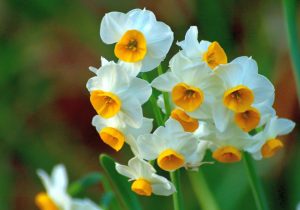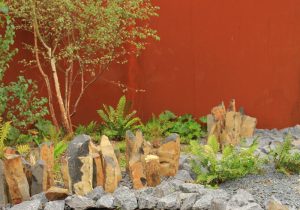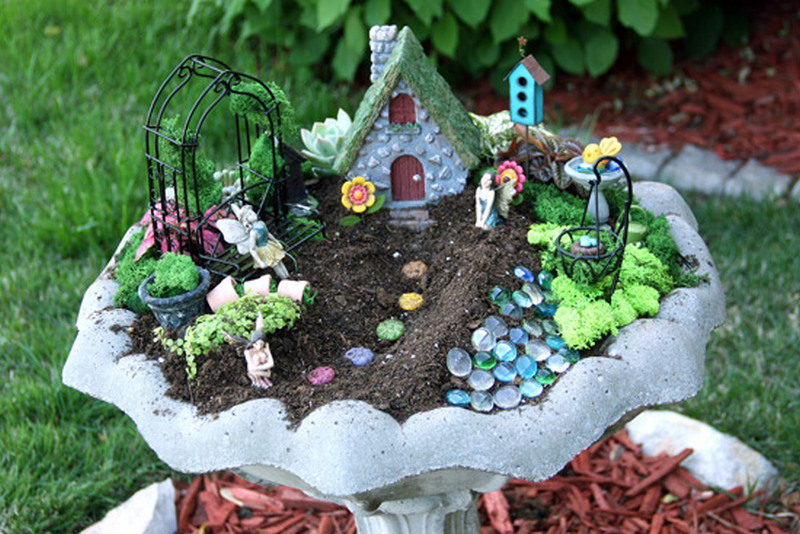
A great approach to bring some magic into your house or garden is building a fairy garden. These carefully created and creatively inspired small landscapes not only provide a whimsical focal point but also provide a special means of artistic expression. There are countless opportunities, whether you are creating this enchanted place for kids or yourself.
This guide will teach you everything you need to know to design your own fairy garden, from selecting plants to choosing the correct containers and accessories.
Fairy Garden Design
Contents
Fairy gardens are charming, miniature landscapes designed to lure in the mythical, magical creatures known as fairies. Although no bigger than a flower pot, these tiny spaces are rich with detail, from miniature houses to diminutive plants, all scaled down to create a mystical world that seems frozen in time and imagination.
Originating from old folklore where gardens were believed to attract and house spiritual beings, fairy gardens today are a creative hobby that brings whimsical joy to gardeners of all ages.
Crafting this garden involves more than just planting, it’s about creating a narrative in a confined space, where every element plays a part in the story. They can be nestled in small containers or spread out in a garden corner, providing a perfect blend of gardening and art.
By integrating natural elements like moss, rocks, and wood, along with fanciful touches like tiny benches, pathways, and houses, enthusiasts create a serene yet magical escape that captivates the imagination and beautifies the environment. Whether placed indoors or outdoors, these gardens offer a delightful escape, serving as a portal to a world of fantasy and charm.

Choosing the Perfect Location
The location of your fairy garden plays a crucial role in its creation and sustainability. Whether you decide to place it indoors or outdoors, the right spot will enhance the enchantment and ensure that your miniature landscape thrives. Here’s how to find the ideal location for your garden:
Indoor vs. Outdoor Gardens
- Indoor Fairy Gardens: Indoor gardens are perfect for year-round enjoyment, regardless of the weather outside. They can be placed in various indoor settings such as windowsills, tabletops, or even in large terrariums. The key is to ensure adequate light. Indoor settings also allow for more control over the environment.
- Outdoor Fairy Gardens: Outdoor gardens allow you to integrate larger elements and natural growth into your design. Consider spots like under a tree, in a flower bed, or on a patio. Outdoor gardens need to be sheltered from extreme weather conditions such as harsh sun, heavy rain, or strong winds.
Assessing Light and Climate Conditions
- Light Requirements: Most plants used in these gardens prefer partial shade or indirect sunlight. Too much direct sun can scorch delicate plants and fade decorative elements, while too little light can stunt plant growth. Evaluate the light patterns in the proposed location throughout the day to ensure that your garden will have the optimal light exposure.
- Climate Considerations: If you’re setting up an outdoor garden, local climate plays a significant role. Hardy plants that can withstand local temperature variations are ideal. For colder climates, consider using perennial plants that can survive the winter, or opt for portable containers that can be moved indoors during harsh weather.
Selecting the perfect location requires a balance of practicality and creativity. Whether indoors or outdoors, the right spot will bring your fairy garden to life and keep it flourishing.
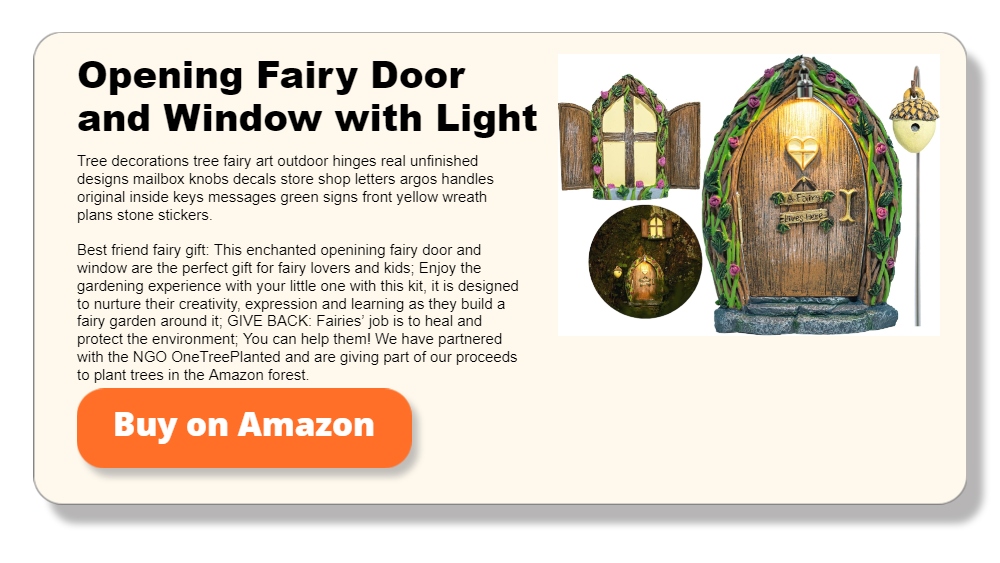
Selecting Containers and Themes
Creating a fairy garden begins with choosing the right container and theme that resonate with your vision of a miniature magical realm. The container serves as the foundation of your fairy garden, defining its boundaries and setting the stage for your whimsical landscape. The theme, on the other hand, infuses your fairy garden with character and story, guiding the selection of plants and decorations.
Here’s how to navigate the choices for both to bring your fairy garden to life:
Types of Containers
- Traditional Pots: Pots are the most common choice for fairy gardens due to their availability and variety in sizes and materials. Whether it’s terracotta, ceramic, or plastic, each offers different aesthetic appeals and benefits. Terracotta pots are breathable and suitable for outdoor settings, while ceramic pots come in numerous designs that can complement your fairy garden theme.
- Creative Alternatives: For a more unique approach, consider items like old teacups, bird baths, wheelbarrows, or even broken pots. These unconventional options can add an element of surprise and creativity to your fairy garden. Broken pots, for instance, can be arranged to create a “spilling” garden effect that looks both enchanting and artistic.
- Hanging Containers: Hanging baskets or glass globes can be transformed into aerial fairy gardens that offer a floating, ethereal quality. They are perfect for small spaces or adding vertical interest to your garden. When using hanging containers, ensure they are secure and positioned where they can be easily maintained.
Theme Ideas
- Enchanted Forest: This theme draws inspiration from the dense, mysterious woods often associated with fairy tales. Use mosses, ferns, and small trees like bonsai to create a lush, green landscape. Adding elements like miniature wooden cottages, fairy figures, and rustic pathways can enhance the forest feel.
- Beachfront Oasis: Craft a seaside retreat for your fairies with a beach-themed garden. Use fine sand, small pebbles, seashells, and succulents that mimic coastal vegetation. Miniature deck chairs, umbrellas, and a tiny lighthouse can complete the beach scene.
- Magical Kingdom: Create a regal setting with a castle or palace theme. Miniature castles, stone pathways, and elegant metal benches set the stage for a noble fairy tale. Plant regal purple and white flowers like violets and miniature roses to add royal flair.
- Whimsical Tea Party: Inspired by the Mad Hatter’s tea party, this theme uses teacups, saucers, and miniature tea sets as key elements. Surround your tea party setup with colorful flowers like small daisies and baby’s breath to create a joyful and vibrant atmosphere.
- Seasonal Themes: Adapt your fairy garden to the seasons with appropriate decorations. For spring, add mini Easter eggs and fresh blooms. Summer might feature miniature beach balls and sun hats, while autumn calls for tiny pumpkins and colorful leaves. Winter wonderlands can be created with artificial snow and miniature skis or sleds.
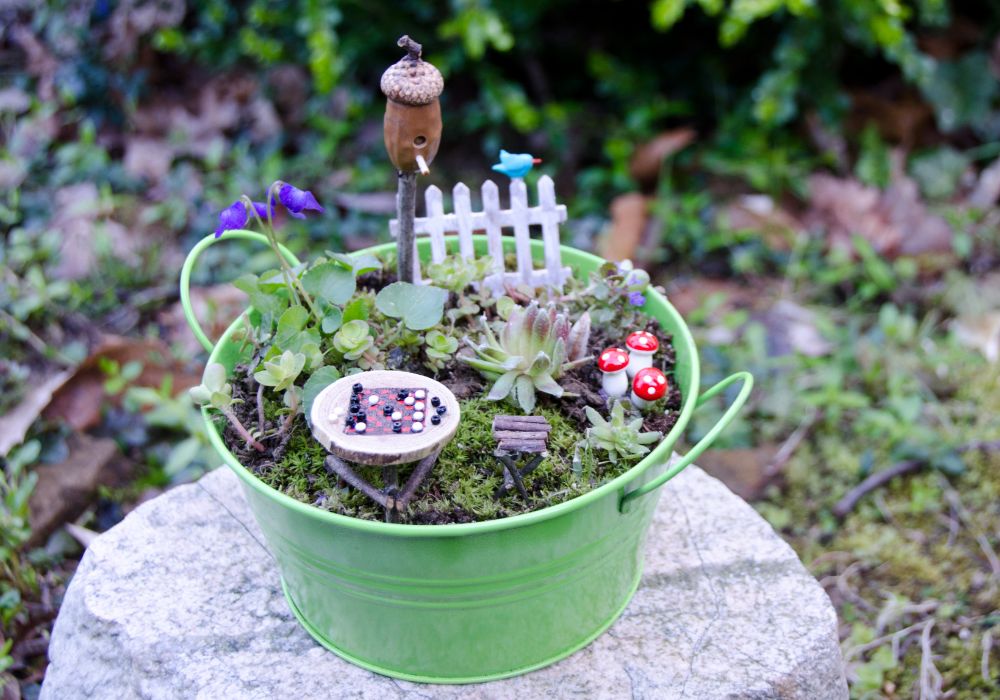
Selecting the right container and theme not only adds to the aesthetic appeal of your fairy garden but also makes the process of creating it more enjoyable. Each choice reflects your personal style and the magical narrative you wish to weave, making your fairy garden a truly unique and enchanting creation.
Decoration Considerations
To create a captivating miniature landscape, you’ll need a collection of essential supplies and decorations. These components are crucial in shaping the environment of your creation, ensuring that every detail contributes to the overall magical atmosphere.
Here’s a comprehensive guide to the basic supplies and accessories that will help you build a charming and cohesive scene.
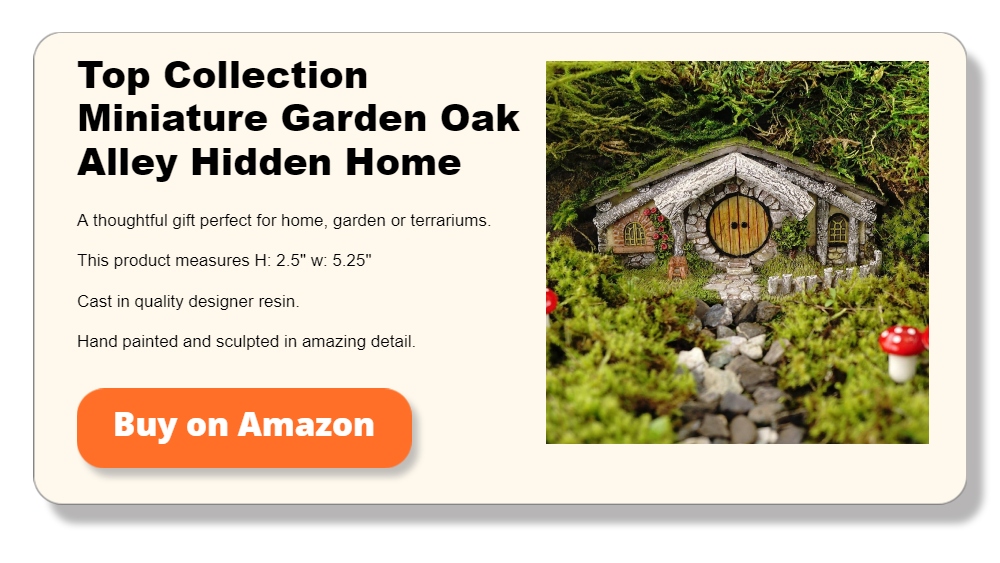
Structures
Houses, bridges, and gazebos form the architectural backbone of your miniature setting. Choose pieces that complement the container’s size and theme. For instance, a tiny stone cottage fits perfectly into an enchanted forest theme, while a small beach hut is ideal for a seaside narrative.
Figurines
Fairy figures, animals, and mythical creatures add life and character. Positioning a fairy sitting on a swing or a dragon hiding behind a rock can create delightful scenes that ignite the imagination.
Furniture and Pathways
Miniature furniture like benches, chairs, and tables invite fairies to sit and stay awhile. Pathways made from pebbles, sand, or small tiles guide the eye through the landscape and add a sense of depth and reality.
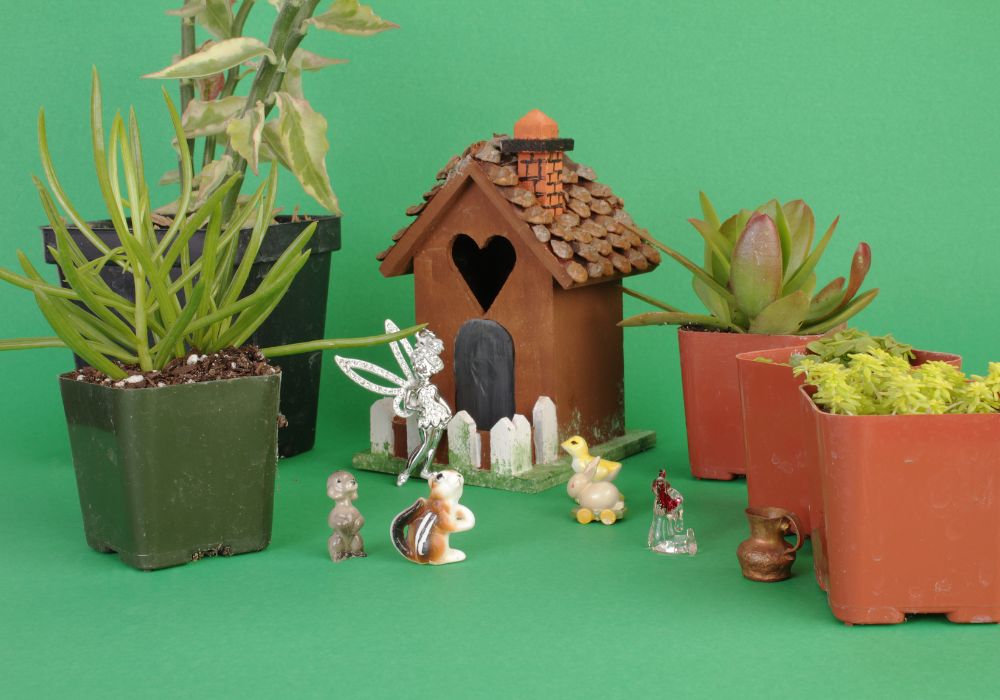
Lighting
Tiny LED lights or glow-in-the-dark pebbles can illuminate your miniature landscape at night, enhancing its enchantment. Strategically placed, they can highlight focal points and cast magical glows on figurines and plants.
Natural Elements
Incorporate natural materials such as wood, stones, and shells to keep the scene grounded and harmonious with nature. These elements help blend the boundaries between the real world and the magical realm you are crafting.
By gathering the right decorations, you can ensure that your miniature landscape is not only beautiful and detailed but also stable and thriving. Whether it’s a fairy garden nestled in your living room or a magical escape in your backyard, these essentials will help you create a scene that’s both enchanting and enduring.
Plant Selection
Choosing the right plants is essential in creating a vibrant and realistic miniature landscape. The plants you select not only need to be proportionate to the scale of your design but also need to thrive under similar light and water conditions to ensure your garden remains healthy and beautiful. Here’s a detailed guide to selecting the best plants that will bring your magical realm to life.
Best Plants for Fairy Gardens
Small Perennials and Groundcovers:
- Mosses: Mosses are a staple in many miniature landscapes due to their lush, green appearance and low height. They create a soft, carpet-like base that resembles a forest floor.
- Sedum: Sedum varieties, known for their resilience and compact growth, come in a range of colors and textures. They are excellent for adding a pop of color and filling in spaces with little maintenance.
- Thyme: Creeping thyme is another fantastic choice. Its tiny leaves and flowers add intricate detail and it can withstand foot traffic if your scene includes pathways.
- Baby’s Tears (Soleirolia soleirolii): This plant features small, round leaves that grow densely, ideal for covering large areas uniformly.
Dwarf Shrubs:
- Boxwood: Dwarf boxwood shrubs can be pruned into various shapes to mimic larger trees, making them perfect for maintaining the scale.
- Dwarf Alberta Spruce: A miniature conifer that looks like a tiny pine tree, ideal for creating woodsy backdrops or central features in your design.
- Heuchera: Known for their colorful foliage in hues of purple, red, and green, heuchera can add vibrancy and contrast against greener plants.

Flowering Plants:
- Miniature Roses: Their scaled-down blooms provide classic beauty and come in various colors to suit any theme.
- Alyssum: Alyssum flowers are tiny yet profuse, offering a sweet fragrance and a soft, mounding habit that works well along edges and in flower beds.
- Violets: These small but vivid flowers can bring a splash of color and fill the air with their delicate scent.
How to Arrange Plants for Visual Impact
- Layering and Height: Creating layers and varying heights in your garden adds depth and interest. Start with taller plants at the back or center, depending on your viewing angle, and layer forward with progressively shorter plants. This technique not only enhances the garden’s visual appeal but also mimics natural landscapes.
- Focal Points and Groupings: Choose a focal plant or a distinctive element like a flowering shrub or a uniquely shaped tree to draw attention. Surround your focal points with complementary, lower-growing plants to create a cohesive look. Grouping similar plants or repeating patterns throughout the garden can unify the design and lead the eye through the scene.
- Contrasting Textures and Colors: Mix plants with different textures and colors to create visual interest and contrast. For instance, the soft, fine texture of moss against the coarse, rugged appearance of a sedum can highlight both plants’ features. Use colors thoughtfully to convey mood—cool blues and greens for a calming effect or bright yellows and reds to energize the space.
- Practical Considerations: When arranging your plants, consider their growth habits and care requirements. Ensure that all plants in your garden require similar amounts of light and water, which simplifies maintenance and keeps your garden thriving. Also, think about accessibility for pruning and care, especially in intricate layouts where every plant needs to remain in perfect form and health.
Through thoughtful plant selection and strategic arrangement, you can create a compelling and cohesive miniature landscape that captivates and delights all who view it. Whether your garden is nestled in a small indoor planter or takes pride of place in an outdoor setting, the right plants are key to bringing your enchanted vision to life.
Maintenance Tips
Maintaining your fairy garden is crucial to ensure that it continues to thrive and enchant. Regular care will keep the plants healthy and the decorative elements in good condition, allowing your miniature landscape to evolve beautifully over time. Here’s how to keep your fairy garden looking its best through routine upkeep and attentive maintenance.
Routine Care and Upkeep
- Watering Practices: Proper watering is vital for the health of your fairy garden. Use a small watering can or a spray bottle to gently water the plants, ensuring the soil is moist but not waterlogged. Overwatering can lead to root rot and fungal diseases, while under-watering can stress plants, making them susceptible to pests and poor growth.
- Pruning and Trimming: Regular pruning helps maintain the shape and scale of the plants in your fairy garden. Use small scissors or pruning shears to trim back overgrowth and remove dead or dying foliage. This not only keeps your garden tidy but also encourages healthy growth and flowering.
- Weeding: Weeds can quickly overtake a miniature garden due to their fast growth. Regularly remove weeds by hand to prevent them from stealing nutrients and light from your decorative plants. This also helps maintain the aesthetic appeal and structural integrity of your garden.
- Fertilizing: Use a diluted, balanced liquid fertilizer to provide essential nutrients to your plants. Apply fertilizers sparingly, as excessive nutrients can lead to rapid growth that might disturb the scale and harmony of your fairy garden.
Seasonal Adjustments for Long-Term Enchantment
- Spring Preparation: Spring is the perfect time to refresh your fairy garden. Replace any plants that did not survive the winter and add new elements to rejuvenate the landscape. Check for any damage to decorations caused by winter weather and make necessary repairs.
- Summer Care: During the hot months, ensure your fairy garden is positioned in a location where it receives morning sunlight and afternoon shade to prevent overheating. Water more frequently but avoid wetting the foliage in direct sunlight to reduce the risk of leaf burn.
- Autumn Updates: As the weather cools, reduce watering and prepare your fairy garden for colder temperatures. If your garden is outdoors, consider moving it indoors or providing protection from frost to extend the life of tender plants.
- Winter Protection: If your fairy garden remains outside during winter, cover it with a frost cloth or bring it into a garage or shed during severe weather. This helps prevent frost damage and ensures that your fairy garden will be ready to flourish again in spring.
Ensuring Lasting Magic
- Regular Cleaning: Dust and debris can accumulate on both the plants and decorative elements, diminishing the enchanting appearance of your fairy garden. Regularly clean the features of your garden using a soft brush or a damp cloth. For intricate pieces, a toothbrush can be used to gently scrub away dirt.
- Pest Control: Monitor your garden for signs of pests such as aphids or mites. If pests are present, use natural remedies like neem oil or insecticidal soap to safely treat the problem without harming the miniature ecosystem.
- Revamping and Redesigning: As seasons change or as you gather new ideas, don’t hesitate to revamp or redesign elements of your fairy garden. This keeps the garden dynamic and engaging, and allows you to adjust the layout to accommodate plant growth or introduce new themes and features.
By following these maintenance tips, your fairy garden will remain a vibrant and delightful retreat that captivates the imaginations of all who see it. Regular care not only preserves the health and beauty of your garden but also enhances the magical experience it provides.
Conclusion
Creating a fairy garden offers a unique blend of gardening and storytelling, allowing you to craft a magical miniature world that delights the senses and sparks the imagination. With the right choice of plants, containers, and themed decorations, you can design a captivating space that invites whimsy into your daily life. By maintaining your garden with care and creativity, it will continue to thrive and enchant for years to come.
For more decorative mini gardens, check out our planted fishbowl guide!

